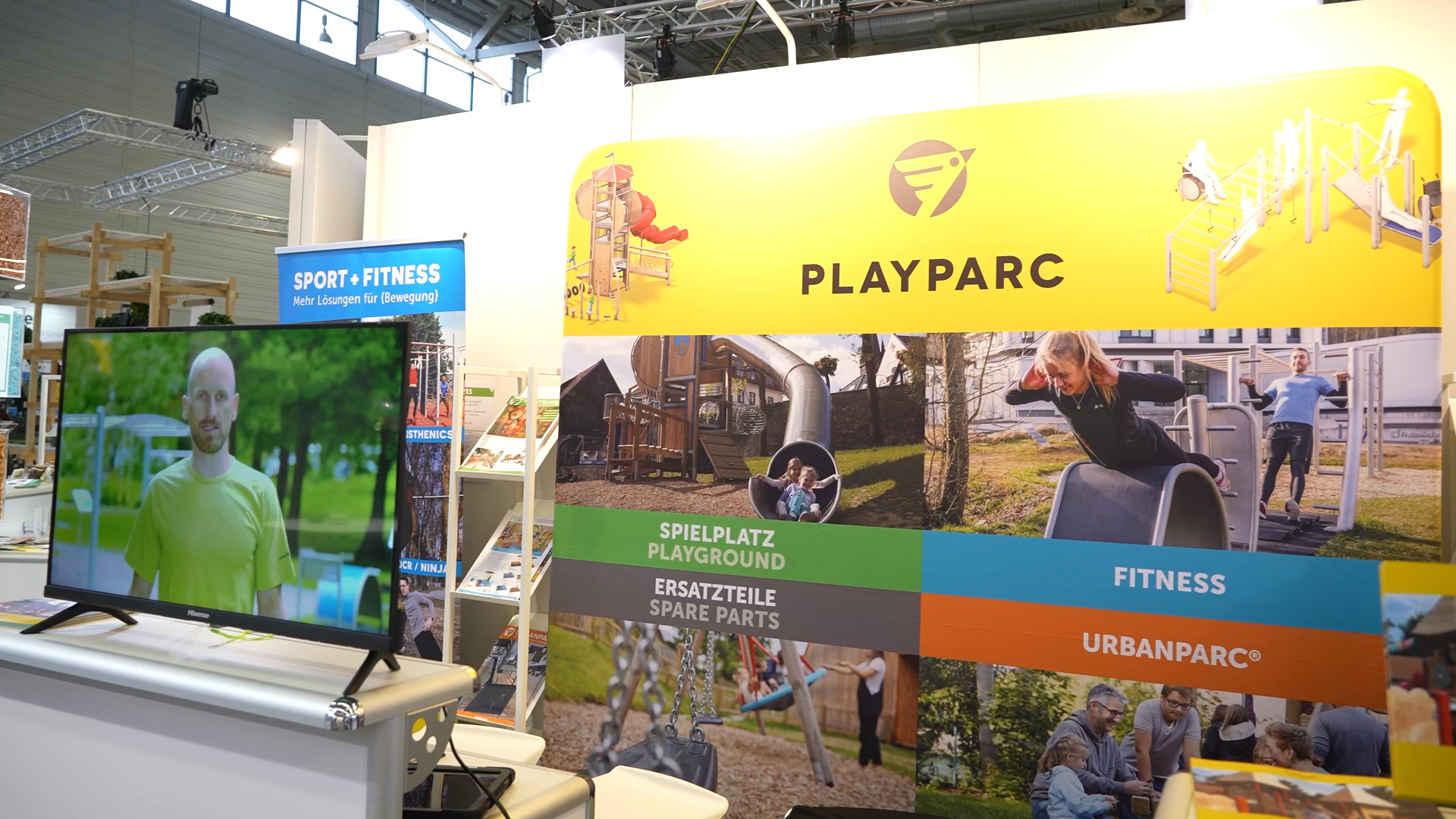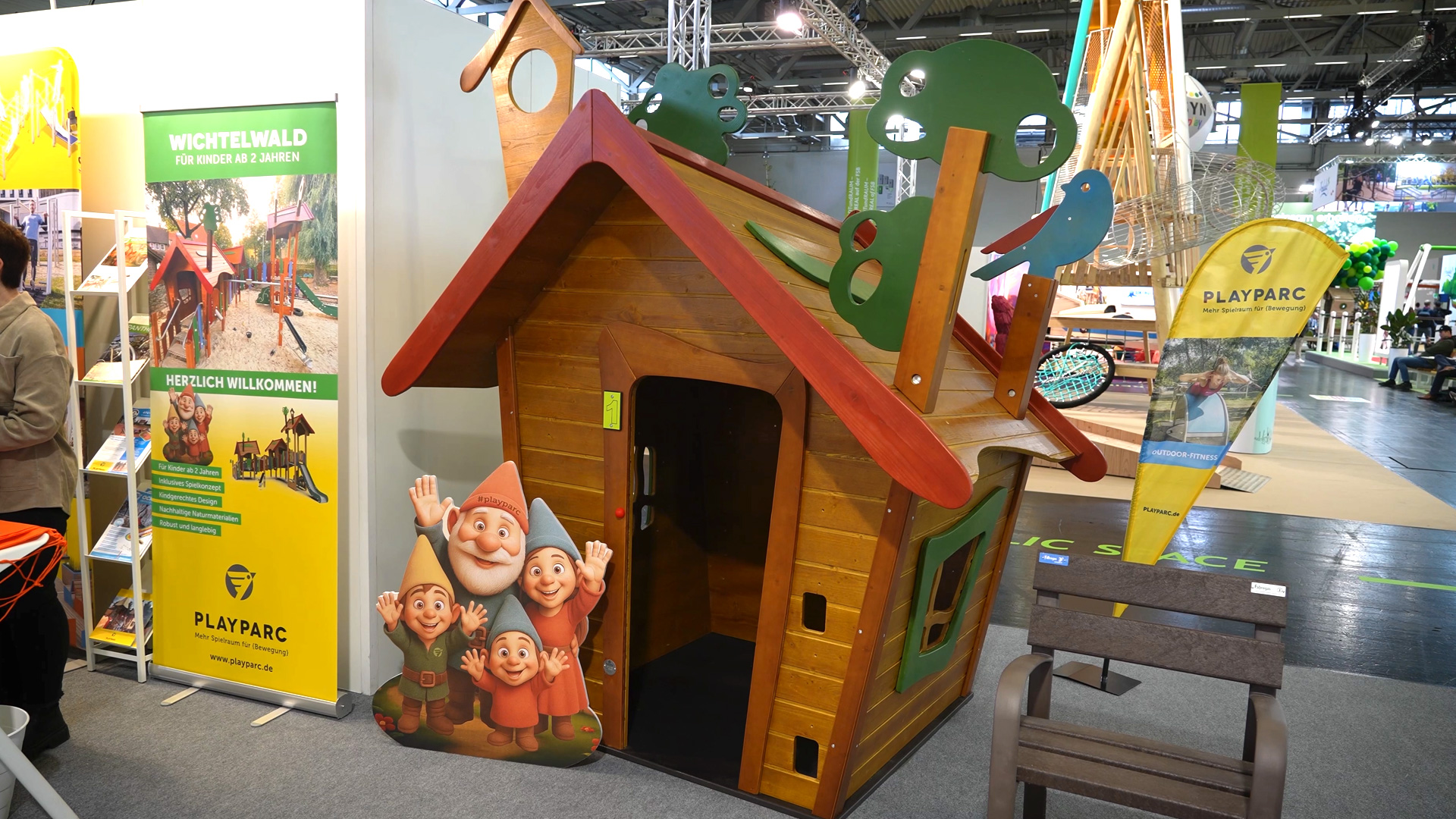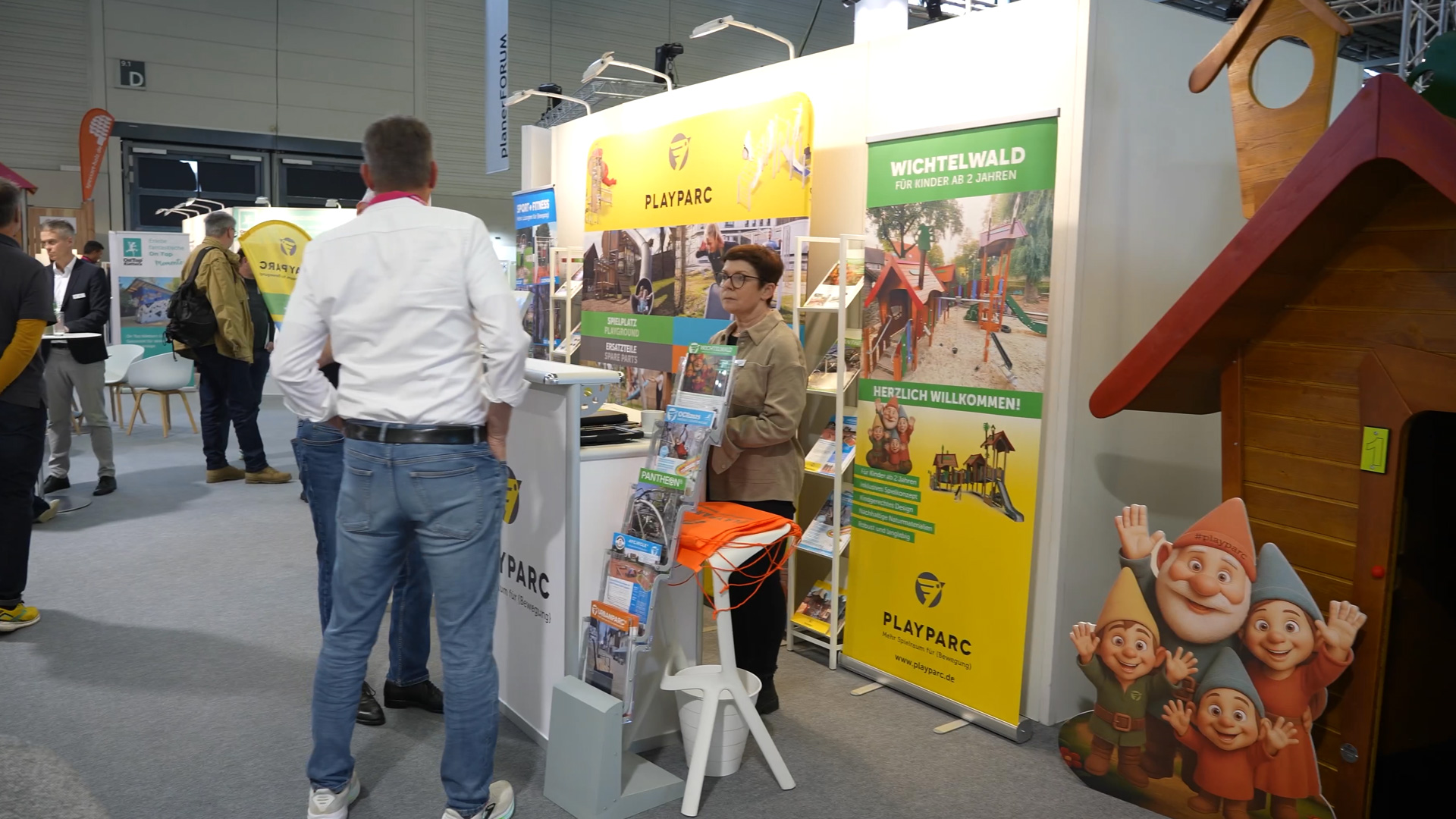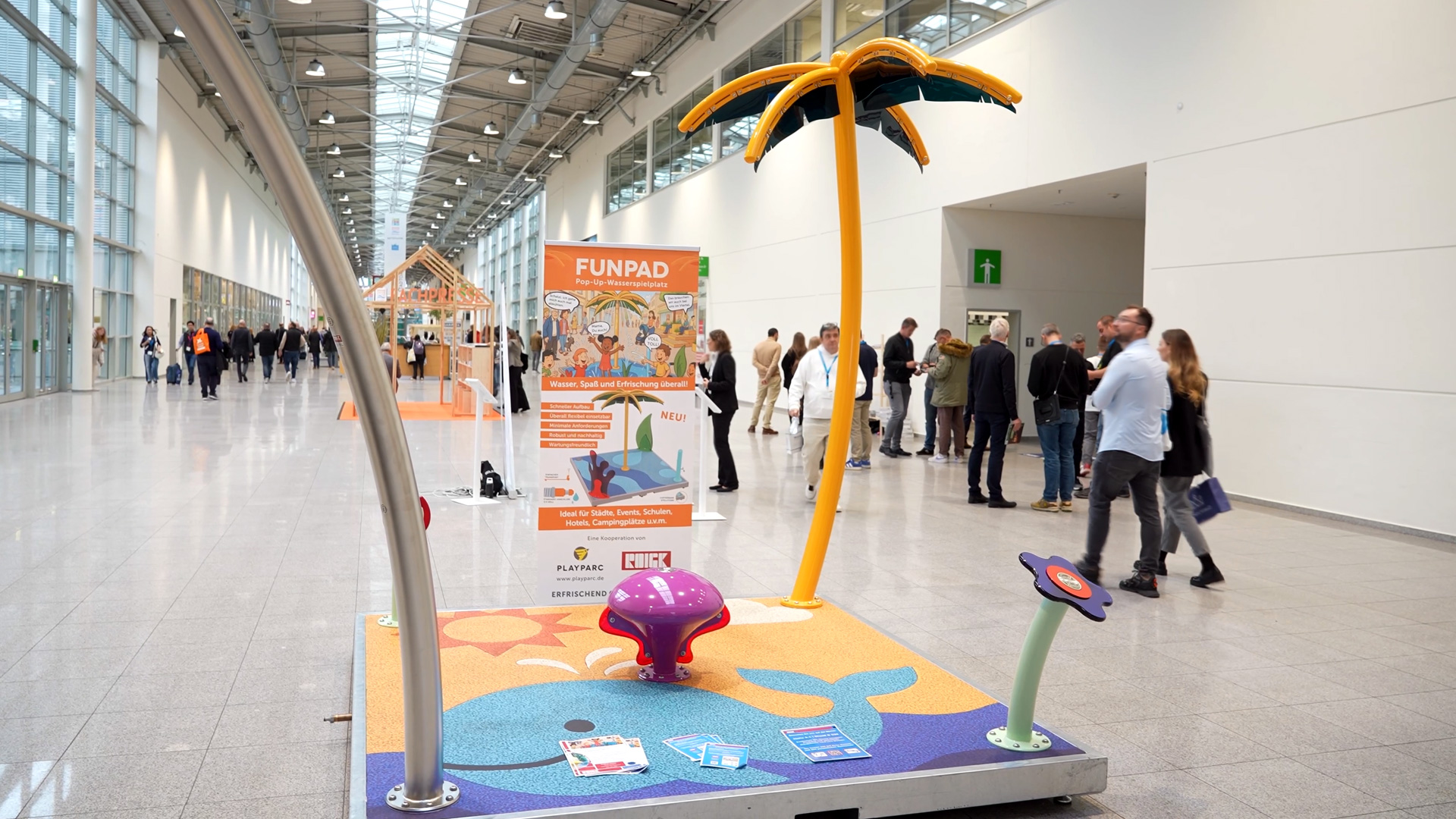At the trade fair, Playparc is presenting its new product line Wichtelwald – a play series that combines naturalness, design, and educational standards. It was developed for daycare centers, kindergartens, and institutions that value age-appropriate exercise, role-play, and aesthetic integration into green outdoor spaces. Wichtelwald uses the sensory qualities of wood, combined with clear color accents and playful details, to create an environment in which children can discover, interact, and be creative.

The playhouses in the Wichtelwald series are made entirely of natural wood, which is treated with a durable glaze. This protects against the elements and adds color without covering up the characteristic grain of the material. The result is what Playparc calls a “play of colors”: subtle but effective accents that attract attention and provide orientation. These color contrasts are particularly helpful in an inclusive context to make structures, paths, or platform boundaries visible. Wood has an advantage over metal and composite materials: it feels warm, conveys a sense of nature, and appeals to children's sense of touch. Sensory perception plays a central role, especially in the early years of life – the tactile experience of surfaces, smells, and temperature differences. The material wood thus becomes part of the play experience itself.

The Wichtelwald series opens up different levels of play: low-level houses for the youngest children, platforms with transitions for older children, and slides that promote movement, courage, and balance. The smaller models allow even the youngest children to engage in their first role-playing games – for example, as a “gnome family” that lives together, cooks, or makes up stories. The concept deliberately focuses on interaction: children meet at eye level, discover spaces, exchange ideas and explore their surroundings in a playful way. In taller versions, slides and extensions expand the possibilities. Transitions connect the play islands, while distorting mirrors and small details inspire wonder.
The Wichtelwald is available in eight types, which differ in platform height, construction method, and equipment. The spectrum ranges from classic ground-level playhouses to more complex tower variants with bridges, transitions, and multiple levels. This modular structure makes it possible to respond to site conditions and target groups—for example, smaller models for nurseries or more extensive facilities for schoolyards and public playgrounds. Playparc attaches particular importance to the balance between uniformity and individuality: the series offers fixed basic shapes, but can be customized with colors, small design elements, or special requests. Even theme requests—such as a Lummerland look from Jim Knopf—can be incorporated. This makes Wichtelwald a play world with an open character that adapts to different educational and architectural concepts.

A key feature of the Wichtelwald series is its regional production. All of the wood used comes from the Sauerland region – short transport routes and sustainable forestry are an integral part of the concept. The durability of wood depends on its location and care. Moisture, shade, or intense sunlight affect its service life. Playparc emphasizes that re-glazing after several years is advisable to protect the surface and maintain the color effect.
The concept includes not only the product, but also accompanying consulting services. Playparc works with those responsible on site to analyze whether the chosen model is suitable for the target group and the terrain. It is crucial that the play equipment is neither too challenging nor too easy for the children. This planning support ensures that the Wichtelwald can be integrated in a functional, safe, and durable manner.

The combination of natural wood and targeted color accents creates an inclusive environment that appeals to children with different perceptual abilities. Color contrasts aid orientation, while the warm material conveys a sense of safety and security. The Wichtelwald thus meets not only design requirements, but also educational and social needs – a play area that connects.
The Wichtelwald stands for a conscious use of materials, space, and movement. With its modular types, variable platform heights, and sustainable production from regional wood, Playparc offers a solution that harmonizes functionality, design, and educational value. The play series creates places where children not only play but also experience nature directly.